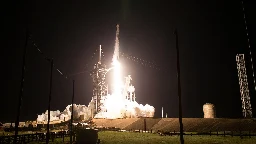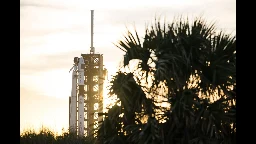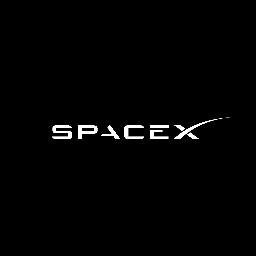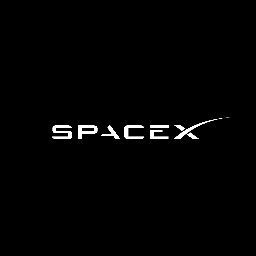Earth-Sun L4 and L5 Lagrange points
I understand these are at 60 degrees ahead of, and behind, Earth (respectively). Does anyone know how much harder it is to keep satellites at other 'offsets' from Earth? Could we realistically also have one at 30 degrees, one at 90 degrees, one at 120 degrees, and one at 150 degrees?
And could it be beneficial to send data via that route? Could they play a role analogous to something like this?:
https://en.m.wikipedia.org/wiki/Optical_communications_repeater
Or would it just be a pointless increase in latency for no benefit?
My uneducated guesses:
- Starlink's existing provision for Earth could be achieved for Mars too, using a very similar system
- In some ways, Mars will be easier.
- Much thinner atmosphere
- Far fewer of the constraints needed to 'play nice' with an existing high-tech civilization, like minimizing reflections of sunlight to the ground, or avoiding radio interference.
- But the first generation system for Mars will be different in an important way: significantly higher altitude
- Thus higher ping times
- And fewer satellites than would otherwise be needed for continuous coverage, which in turn means lower total bandwidth capability, and less redundancy, but much cheaper & quicker to set up and maintain.
- None of the above covers the actual NASA requirement/aspiration for new interplanetary comms (which seems to be referred to as "DRM 4").
- For one thing, an in-space laser link that can cover 100s of miles efficiently, is qualitatively different from one that can cover 100s of millions of miles.
- But as NASA has already achieved over 6 Mbps across 240 million miles, SpaceX will also be able to create a usable interplanetary link
- SpaceX will equip some of their Earth-orbiting Starlink satellites, and all of their Marslink satellites, with this qualitatively different, and outward-facing, laser comms tech.
- Having, as your endpoints, devices that are orbiting around planets, is disadvantageous in some ways, such as the fact they spend about half the time on the wrong side.
- But SpaceX will find a way to make it into an advantage. (Multiple simultaneous connections?)
Any thoughts?
Also, you need a relay capability when the sun is in the way. But are such relays expected to be beneficial even at other times? Will SpaceX find a way to make them beneficial?
P.S. It's interesting that Spaceflight Now did a tweet thread on this NASA presentation, but didn't consider it worth an article. Yet PC Mag made a whole article primarily out of 1/3 of a slide from one of those tweets by Spaceflight Now! (And I'm glad they did!)
Elon may have given them the info
No need. Spaceflight fans (like me!) are supporting and funding what may be the biggest aerospace espionage operation in history by a factor of 10, down in South Texas. With crowdsourced tracking and analysis. Must be beyond the CPC's wildest dreams!
E.g.:
https://www.youtube.com/live/mhJRzQsLZGg
https://ringwatchers.com/
https://sh.itjust.works/post/27492397
And we ain't gonna stop!
starlink availability in Russia
I remember a story coming out about Russians using Starlink but it seemed a bit vague to me. Has anyone reliable actually asserted that SpaceX are significantly underperforming in the job of blocking captured terminals (once notified), or other aspects of the day-to-day operations that the Ukrainians would do if they controlled it themselves?
FWIW, SpaceX seems to deny it. https://x.com/SpaceX/status/1849956344691912873
" … As has been repeatedly confirmed by the Department of Defense, SpaceX has worked (and continues to work) in close partnership with the U.S. Government regarding Ukraine and denial of service to bad actors. …"
Also onboard is the ARTEMOSS experiment, which is pronounced similarly to “Artemis” in a nod to NASA’s Moon-bound program. The acronym stands for “From Antarctica to Space: Molecular Response and Physiological Adaptation of Moss to Simulated Deep Space Cosmic Ionizing Radiation and Spaceflight Microgravity.”
Shouldn't that be FATS:MRPAMSDSCIRSM?
Nestled inside the trunk of the Dragon is a device called CODEX (COronal Diagnostic EXperiment), ... the device will be unpacked and installed using the Canadarm-2 robotic arm.
I've been wondering why this mission couldn't just dock to the zenith port. Could this be why? Is there better access for the arm at the forward facing port? (For those who didn't know, Crew-9 had to relocate Dragon Freedom to the zenith port a couple of days ago, to free up the forward port for CRS-31.)
(And just to be clear, I have many problems and potential concerns about Musk. I'm just saying I'd choose him over, say, a Maoist, or a Stalinist, and over "Burn_The_Right".)
How do we remove this cancerous cyst?
I think your username gives us a clue what you would do to Musk and others if you ever gained any power.
I would entrust the wellbeing of humanity to him, over you, without hesitation. We had enough of your type in the 20th Century, thanks.
Though at least they've already proved they can relight during a belly flop.
I would not have thought it could float in a different orientation
Me either. But they call that orientation "Stable 1", possibly implying they've accounted for other stable orientations, and some non-stable situations.
Here was the first time I heard that term (with Bob & Doug): https://www.youtube.com/live/tSJIQftoxeU?t=6h29m34s
The commentator then gives some explanation.
Post-splashdown news conference: https://youtu.be/gOUoI-UYi2Y
They mentioned that Cargo Dragon sometimes reuses parachutes, which I didn't know.
Watched some of the official coverage: https://www.youtube.com/live/5CRB3FHV9Dw
Things that were new to me:
- 1:40:50 Drone footage of the capsule lift
- 34:42 Jones explains that the same set of 12 hooks secures Dragon to either its nosecone or to the ISS. Makes perfect sense; I'd just never thought about it before.
- 1:35:57 "There are multiple options so if Dragon were to splash down in a different orientation they could egress from the top hatch as well."
- Would this be a last resort after they'd tried & failed to correct the orientation?
- Would it only be used when Dragon was still in the sea or would they ever lift Dragon onto the boat in an orientation that necessitated top hatch egress?
And all this talk of Dragon orientation, combined with the extensive weather delays in Crew-8's departure, got me wondering ... How would Dragon fare if it was left in very rough seas for an extended period? (Imagine the recovery vessel broke down a minute after splash-down and then a big multi-day storm blew in, or something.)
that the engines relight multiple times in orbit
Should they do an orbital test next? Or continue with the previously used 'almost orbit' trajectory that ensures the second stage re-enters safely with no need for a relight?
The SpaceX officials in the audio said they were “trying to focus on booster risk reduction versus ship envelope expansion” for the next flight.
For the "ship envelope expansion", do you think they will/should do an in-space engine relight test? Or are the seemingly successful flip-landing maneuvers on flights 4 and 5 sufficient? (Has this been covered elsewhere?)
Interesting! They're talking about unnecessary aborts, and how they want to do as much analysis as possible of the abort criteria, to prevent them.
This will remain an issue for Flight 6 which, it seems, will happen the moment SpaceX decides it's sufficiently ready. Unlike previous flights ...
"Given this is the first launch in a long time ... well really ever ... that we've not been FAA driven ..."
This would be a nuclear option and, in reality, probably would do more harm than good to SpaceX,
It would probably set back their more ambitious targets by decades. But even Starship is now far enough along to no longer really need Musk's stewardship, and the US government would be happy enough just with control of the Falcon programme. They don't care much / at all about Making Life Multi-Planetary.
So I consider a move like this pretty plausible.
I find the defendant not guilty! I think the NSF guy's idea involved replacing the woman & her arms and the daughter with the tower & "chopstick" arms, and a Super Heavy rocket booster (which is in the process of being caught by the arms). Something like that?
The closest I've seen is this. Not great!
So I tried getting Chat GPT to do a better one for me. This did not go well 😂 But surely someone with experience should be able to cajole a suitable generative AI tool to do a good job of it?
One of my favourite videos of the catch, because of what happens when the sonic booms arrive!: https://youtu.be/749dRxbSkVU (They're at 6:51.) Also it's a different angle from most of the others, because it's from Mexico.
And a playlist: Starship IFT5 booster catch, original footage only
You heard it on Lemmy first!: https://sh.itjust.works/post/25840892 (very soon after Stich first mentioned it)
Link currently doesn't WFM.
I believe when you create a clip from an ongoing YouTube live stream, it will (at best) only work as long as the footage you selected is still available on the stream. And I believe YouTube only keeps the most recent 12 hours of footage.
(What they should do is create a permanent copy of the relevant footage, assuming the channel owner permits it.)
The fairing looks spotless. I guess they're using a new one, at least partly for reasons of cleanliness? (Planetary protection and all that.)
With boosters we're at the point where "flight proven" is no longer just a euphemism for "second hand". I've felt that way myself for a few years. And NASA basically confirmed they agree a couple of months ago, when the brand new booster intended for Crew-9 was given a Starlink mission first, increasing confidence in it after a minor problem during transport. (IIRC)
But I'm not sure if we're at that point with fairings. Or even if we'll ever be.
Is it the end of days if NASA goes without a low-Earth orbit space station for several months or even years? One key commercial space official at the space agency, Phil McAlister, suggested that maybe it wouldn't be.
He's right, and I hate him for it :)
Expedition 1 arrived at the International Space Station on 2000-11-02. That's 59-and-a-bit days before[1] the start of the 21st Century. So whatever disappointments people may have about the 21st Century compared to their expectations, at least we can (currently) say there has been a continuous human presence in outer space for the entirety of it. Pretty cool!
Strikingly, it could easily be the case that there will never again be a time with humans only living on Earth. If that's because AGI kills us all in a decade, with any people in orbit / on the moon being the last to have their atoms repurposed, that's not ideal. But if it's because we spread out through the universe, and outlive our sun and even our galaxy, that could (potentially) be very cool indeed.
Perhaps everyone reading this either witnessed the start of, or was born during, humanity's Second Age!
Or perhaps the current period of continuous off-Earth habitation will finish around 2030 and all my attempts at profundity were a waste of time! After all I'm not sure how much I'd want NASA to spend just to maintain it.
Of course, the ISS isn't the only hope here. The Chinese space station might fill in any gaps after the ISS, although that would be a concern for other reasons (assuming China is still controlled by its communist party, with other parties banned). And then there's the moon. The Artemis Program in its current form won't bring about the start of a continuous presence on the moon by 2030. But I wouldn't put it past SpaceX to shake things up in that regard.
[1] - If you thought the 21st Century started at the start of 2000, see this or even this.
Auf YouTube findest du die angesagtesten Videos und Tracks. Außerdem kannst du eigene Inhalte hochladen und mit Freunden oder gleich der ganzen Welt teilen.
Steve Stich states at today's Crew-9 news conference that Dragon has a new contingency capability if all 4 parachutes fail; the SuperDracos will ignite prior to splashdown.
The Crew-8 return to Earth will also have this capability.
(He said this about 20 minutes after the start of the stream.)

YouTube Video
Click to view this content.
A Youtuber called Ellie in Space claims that a NASA source sent her the following message. It was in response to a question about when NASA knew that the Boe-CFT mission's Starliner vehicle would not be able to undock and return to Earth autonomously without being reconfigured.
> So if you want to know when??? Well always, but it wasn't a reasonable consideration to retain the unmanned Starliner capsule software to work in the manned version of the capsule as a contingency. Would you call that a mistake?? Maybe, but let's think about the need to really ever plan to send folks up to space and leave them there with no way to fly home... they would always chose to risk the ride vs having no way home. > > No one really considered this very unique and dynamic situation would happen.
Background
I believe this issue was first brought to light by Eric Berger.
> Regardless, sources described the process to update the software on Starliner as "non-trivial" and "significant," and that it could take up to four weeks. This is what is driving the delay to launch Crew 9 later next month.
A couple of days later, NASA held a press teleconference in which they emphasized that what was needed was merely a "data load", not a software change. But they indicated timelines that do seem consistent with the "up to four weeks" claim by Berger's source.
My questions
Aren't there several realistic scenarios where you'd want to undock a crew vehicle, without its crew (or at least without them being in a fit state to operate the vehicle), in less than 4 weeeks?
Can Crew Dragon do it? Soyuz?
Auf YouTube findest du die angesagtesten Videos und Tracks. Außerdem kannst du eigene Inhalte hochladen und mit Freunden oder gleich der ganzen Welt teilen.

Relevant portion of the video is 18:06 - 22:22.
Key quote: "We'll move a Dragon recovery vessel to the Pacific some time next year, and we'll use SpaceX facilities in the Port of Long Beach for initial post-flight processing".
Although this was revealed in a Crew-9 briefing, it doesn't actually apply to Crew-9.
The announcement has just now been posted to the SpaceX website.
Key excerpts:
> During Dragon’s first 21 missions, the trunk remained attached to the vehicle’s pressurized section until after the deorbit burn was completed. Shortly before the spacecraft began reentering the atmosphere, the trunk was jettisoned to ensure it safely splashed down in unpopulated areas in the Pacific Ocean.
> After seven years of successful recovery operations on the U.S. West Coast, Dragon recovery operations moved to the East Coast in 2019, enabling teams to unpack and deliver critical cargo to NASA teams in Florida more efficiently and transport crews more quickly to Kennedy Space Center. Additionally, the proximity of the new splashdown locations to SpaceX’s Dragon processing facility at Cape Canaveral Space Force Base in Florida allowed SpaceX teams to recover and refurbish Dragon spacecraft at a faster rate [...]
> This shift required SpaceX to develop what has become our current Dragon recovery operations, first implemented during the Demo-1 and CRS-21 missions. Today, Dragon’s trunk is jettisoned prior to the vehicle’s deorbit burn while still in orbit, passively reentering and breaking up in the Earth’s atmosphere in the days to months that follow. [...]
> When developing Dragon’s current reentry operations, SpaceX and NASA engineering teams used industry-standard models to understand the trunk’s breakup characteristics. These models predicted that the trunk would fully burn up due to the high temperatures created by air resistance during high-speed reentries into Earth’s atmosphere, leaving no debris. The results of these models was a determining factor in our decision to passively deorbit the trunk and enable Dragon splashdowns off the coast of Florida.
> In 2022, however, trunk debris from NASA’s Crew-1 mission to the International Space Station was discovered in Australia, indicating the industry models were not fully accurate with regards to large, composite structures such as Dragon’s trunk. [...]
> After careful review and consideration of all potential solutions – coupled with the new knowledge about the standard industry models and that Dragon trunks do not fully burn-up during reentry – SpaceX teams concluded the most effective path forward is to return to West Coast recovery operations.
> To accomplish this, SpaceX will implement a software change that will have Dragon execute its deorbit burn before jettisoning the trunk, similar to our first 21 Dragon recoveries. Moving trunk separation after the deorbit burn places the trunk on a known reentry trajectory, with the trunk safely splashing down uprange of the Dragon spacecraft off the coast of California.
That's 27 hours from now.
> SpaceX is targeting Saturday, July 27 for a Falcon 9 launch of 23 Starlink satellites to low-Earth orbit from Launch Complex 39A (LC-39A) at NASA’s Kennedy Space Center in Florida. Liftoff is targeted for 12:21 a.m. ET, with backup opportunities available until 4:21 a.m. ET.
> During the first burn of Falcon 9’s second stage engine, a liquid oxygen leak developed within the insulation around the upper stage engine. The cause of the leak was identified as a crack in a sense line for a pressure sensor attached to the vehicle’s oxygen system. This line cracked due to fatigue caused by high loading from engine vibration and looseness in the clamp that normally constrains the line.
>During tonight’s Falcon 9 launch of Starlink from Space Launch Complex 4 East at Vandenberg Space Force Base in California, the second stage engine did not complete its second burn. As a result, the Starlink satellites were deployed into a lower than intended orbit. SpaceX has made contact with five of the satellites so far and is attempting to have them raise orbit using their ion thrusters.
There's also a tweet saying the same thing in fewer words.
This is the affected mission: Starlink 9-3 launch bulletin
Let's hope it was due to SpaceX pushing the envelope on their in-house Starlink missions in some way, though I have no specific guesses along those lines. Perhaps a manufacturing defect or an operational mistake are more likely to be the leading candidates for the cause.
Live from Kennedy Space Center in Florida, NASA Administrator Bill Nelson joins other NASA leaders and program managers to give remarks ahead of NASA’s Space...

Quote from Bill Nelson: >... SpaceX, by having the return of the first stage, has brought the cost down significantly. That has affected the entire launch industry. We'll be seeing attempts at bringing the second stage down on some missions.
The key sentence is (currently) 52 minutes and 48 seconds into the video. Approximately 49 minutes after the event started.
No other mention is made of this. Should we assume he's specifically referring to the 2nd Stage of the Falcon 9? What is the likelihood that he is mistaken? Could he just be thinking of the existing deorbit procedure? Or could SpaceX be putting parachutes on some of their 2nd Stages in the near future?

